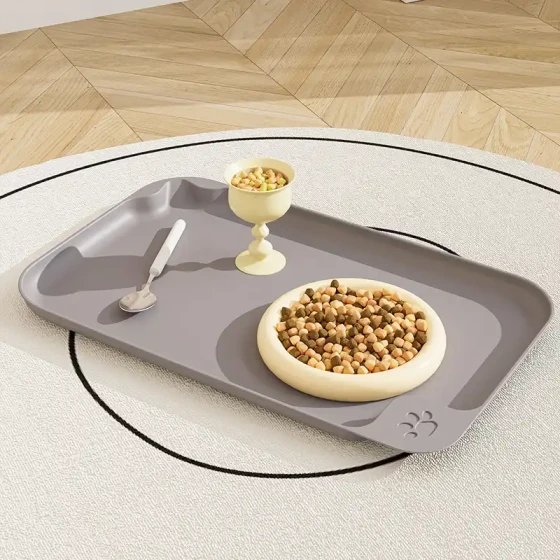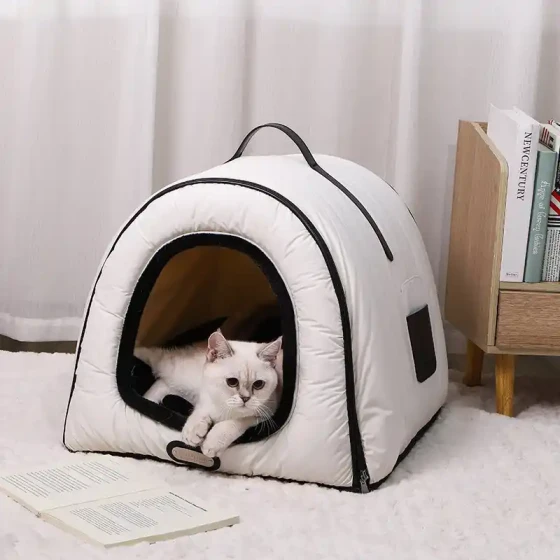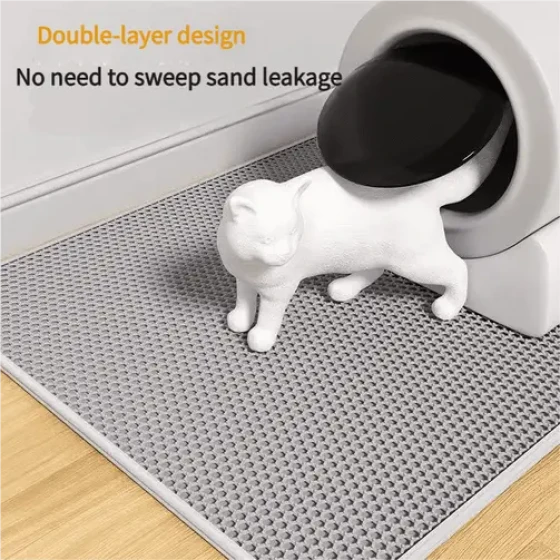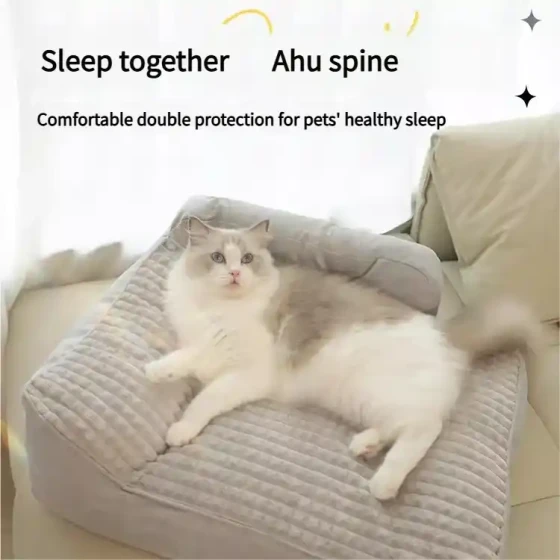What Do Local Cats Eat_House-raised Local Cats Best Diet Combination Guide
Chinese rural cats, commonly known as "local cats," have always been beloved family members in China due to their toughness, intelligence, and strong adaptability. Although they don’t have the "noble bloodline" like some pedigree cats, in terms of diet, local cats, like all cats, need scientific and reasonable feeding to grow healthily. What and how to feed the "little tabbies" and "big oranges" at home is a matter of consideration.
Simply put, the best diet combination for house-raised local cats should revolve around high-quality cat food as the main staple, supplemented with wet food, cat meals, and other diverse foods, while ensuring ample water intake. The diet should be adjusted based on the cat’s age, weight, activity level, and health status, while avoiding "forbidden foods" that cats cannot eat.
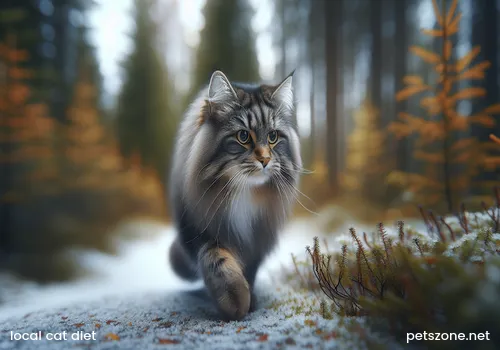
Cat Nutritional Needs: Small Body, Big Energy
Cats are obligate carnivores; their digestive systems have evolved over millions of years to best digest animal protein. This means the cat’s diet needs a high proportion of protein, typically accounting for more than half of the daily calorie needs. Besides protein, fat is also an important energy source for cats and is crucial for skin, coat health, and immune function. Carbohydrates, although not essential, can provide energy in moderation when they are of good quality. Additionally, vitamins and minerals are indispensable for maintaining various physiological functions in cats.
It is especially important to note that cats cannot synthesize enough taurine and vitamin A on their own as humans or dogs can; these essential nutrients must come from animal-based foods. Taurine deficiency can lead to vision problems, even blindness, and heart issues.
Cat Food: Convenient and Scientific Main Food Choice
For house-raised local cats, choosing a high-quality commercial cat food as the main diet is the most convenient and reliable way to ensure balanced nutrition. Professional cat food brands scientifically formulate nutritional components according to different life stages (kitten, adult, senior) and special needs (such as neutered cats, indoor cats).
How to choose high-quality cat food?
- Check the ingredient list: Choose cat food mainly composed of meats (such as chicken, fish, beef) with animal proteins ranked high. Avoid cat foods with grains, corn, etc., listed too high. Although a moderate amount of carbohydrates is acceptable, cats’ digestion and absorption of plant protein are not as efficient as animal protein.
- Check nutritional analysis: Pay attention to crude protein and crude fat content. Adult cat food should have no less than 21% protein, while kitten food should not be less than 33%.
- Select the appropriate age-specific cat food: Cats of different ages have different nutritional needs. Kittens require higher protein and energy to support growth, while senior cats need more digestible food possibly supplemented with joint-support ingredients.
- Know the brand: Choose brands with a good reputation and credibility. Some domestic pet food brands are also emerging; keeping an eye on them can be beneficial.
Cat food feeding tips:
- Regular and measured feeding: Try to feed at regular times in measured amounts to avoid overeating or excessive hunger. Most adult cats can be fed twice a day, while kittens need more frequent small meals.
- Avoid free feeding: Allowing cats to free feed long-term can lead to picky eating, obesity, or malnutrition.
- Gradual food transitions: When switching cat food brands or types, do it gradually by increasing the proportion of new food and reducing the old food to help the cat’s digestive system adapt and avoid digestive issues.
Wet Food and Cat Meals: Good Choices for a Varied Diet
Besides dry cat food, feeding some wet food (such as main course canned food) or homemade cat meals can increase dietary diversity and supplement water intake.
- Wet food: Wet food contains higher moisture, helping cats stay hydrated and preventing urinary tract diseases. When choosing main canned food, pay attention to ingredients and nutritional balance. Snack canned food is usually considered treats, nutritionally unbalanced, and not suitable as a staple food.
- Homemade cat meals: If you have the time and energy, you can make nutritionally balanced cat meals for your cat. The main ingredients should be cooked meats (chicken, beef, fish, etc.), with a small amount of cooked vegetables (such as pumpkin, carrot, but in very small quantities). Remember homemade cat meals must be scientifically balanced and must not include salt, oil, or other human seasonings. Randomly prepared meals can easily cause nutritional deficiencies in cats.
Water! Water! Still Water!
"The world is undecided, you and I are both dark horses; cats not drinking water, beware of urinary emergencies!" Although this popular internet saying is a joke, it also reflects the importance of water intake for cats. Cats naturally dislike drinking water, but adequate hydration is crucial for their health, especially in preventing urinary stones and other issues.
How to encourage cats to drink more water?
- Provide multiple water bowls: Place several water bowls around the house to make it convenient for cats to drink anytime.
- Use water bowls of different materials: Try ceramic, stainless steel, glass, etc. Some cats may have preferences for bowl material.
- Keep water fresh and clean: Change fresh water daily and clean water bowls regularly to avoid bacterial growth.
- Try flowing water sources: Some cats are more interested in flowing water; consider using pet water fountains.
- Wet food is a good helper: As mentioned earlier, wet food can help cats consume more water.
Foods Cats Cannot Eat: The "Forbidden Zone"
Some foods commonly eaten by humans are toxic to cats and must be avoided carefully.
- Onions, garlic, chives, and other allium plants: Contain sulfides that damage cats’ red blood cells and cause anemia.
- Chocolate: Contains theobromine, toxic to cats’ nervous and heart systems.
- Grapes and raisins: May lead to kidney failure in cats.
- Alcohol: Even small amounts can cause poisoning.
- Raw eggs: Contain avidin, which affects vitamin B absorption and may harbor bacteria.
- Raw meat and raw fish: May contain parasites and bacteria.
- Cat bones: Cooked bones easily splinter and may injure the cat’s digestive tract.
- High fat and high salt foods: Human foods often contain excessive fat and salt, unsuitable for cats.
Diet Focus for Local Cats at Different Ages
- Kittens (0-12 months): At a rapid growth stage, requiring high protein, high energy, and easily digestible foods. Special kitten food can be chosen and fed in small, frequent meals.
- Adult cats (1-7 years): Weight and body condition are relatively stable, requiring balanced nutrition to maintain weight. Feed according to the cat food packaging instructions, adjusting for the cat’s activity level.
- Senior cats (7 years and older): Metabolism slows, activity decreases, and digestive absorption weakens. Choose easily digestible, low phosphorus, possibly joint-supporting senior cat food and feed in small, frequent meals.
Frequently Asked Questions
- Do local cats have to eat cat food? What about leftover human food? Professional cat food is scientifically formulated to meet the complete nutritional needs of cats. Long-term eating of leftover human food is not only nutritionally unbalanced but may also harm cats’ health due to high fat, salt, and seasoning. For the cat’s health, it is recommended to base their diet on cat food.
- Is giving fish liver oil to cats good? Fish liver oil is rich in vitamins A and D, but excessive intake of these vitamins can harm cat health. It is not recommended to supplement without veterinary advice.
- What to do if a cat is picky? Try changing different flavors or textures of cat food, or add small amounts of freeze-dried treats to increase palatability. However, avoid long-term feeding of a single food or feeding human food due to pickiness.
- How fat is too fat for a cat? You can check by touching the cat’s ribs. If the ribs are easily felt, the weight is normal; if not, the cat may be overweight. It’s best to have regular veterinary checkups to assess weight and physical condition.
Summary
Raising a healthy local cat starts with its "mouth." Choose high-quality, age-appropriate cat food as the staple diet, supplemented with wet food or scientifically prepared cat meals, ensure adequate and clean water supply, and strictly avoid foods cats cannot eat. This way, the "little cuties" at home can stay healthy and happily accompany us for longer. Remember, each cat is an individual with potentially different dietary needs. If you have any questions about your cat’s diet, it is best to consult a professional veterinarian for more targeted advice.
